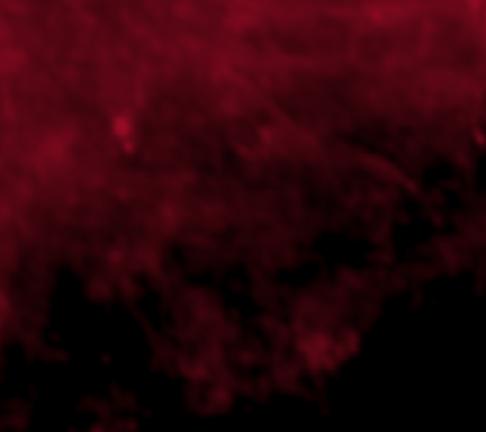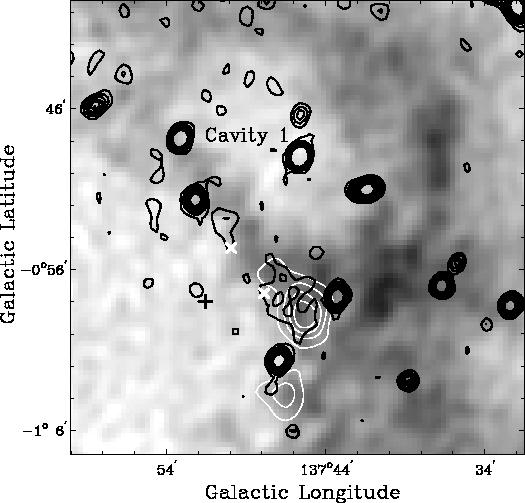
Interstellar dust radiates at far infrared wavelengths. There is no trace of
the shell in this IRAS image at a wavelength of 0.1 millimeter. The emission that
is visible is probably not related to the shell. It is mainly dust in the Perseus
spiral arm that is in the foreground. One possible exception is a faint
infrared source identified by Digel et al. (1994), that could be
associated with the CO cloud discovered by Digel et al. (1994).

This is
Figure 5 from the paper by Stil & Irwin (2001).
The white contours
show the outline of the molecular cloud. The black contours outline
radio continuum emission at a wavelength of 21 cm from ionized
hydrogen. The ionized hydrogen (HII region) was discovered by De
Geus et al. (1993), and has the same velocity as the molecular
cloud. The grayscales display the atomic hydrogen with the same velocity
as the CO cloud and the HII region. All of the atomic hydrogen is part of
he shell GSH 138-01-94. The white crosses indicate the brightest
areas of the optical emission of the HII region. The black + indicates
the star that is probably responsible for the ionization of the HII region
(see De
Geus et al. 1993)
Back

